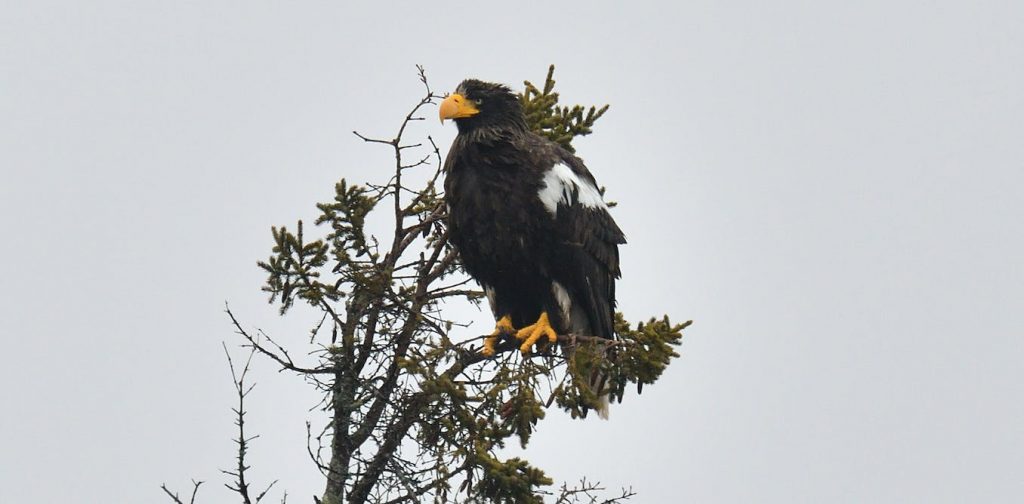Is there life in the sea that hasn’t been discovered?



Curious Kids is a series for children of all ages. If you have a question you’d like an expert to answer, send it to curiouskidsus@theconversation.com.
Is there life in the sea that hasn’t been discovered? – Haven W., age 12, McKinney, Texas
Imagine going to a place on Earth where no one has ever been. There are many locations like that in the ocean, which covers more than 70% of our planet.
In the ocean, creatures live at many different depths, just as animals and birds live at different heights in a forest. Every ocean life form has to find a way to gather nourishment, reproduce and contribute to an ecological community.
The ocean is thousands of feet deep in many areas and offers millions of opportunities for life to thrive. Biologists don’t know how many species live in the ocean, but they estimate that fewer than 10% have been described.
Black and white smokers
Fifty years ago, no one imagined that entire biologic communities were thriving in extreme darkness under the crushing pressures of the deep sea. Then they found them, at spots called hydrothermal vents – first with underwater cameras and thermometers, next by sending humans down in Alvin, an underwater vehicle.
The researchers found spots where hot water jetted upward through cracks in the seafloor, like geysers on land. Some of the water was as hot as 750 degrees Fahrenheit (400 degrees Celsius) – more than twice as hot as the oven when you bake a cake. And it was full of dissolved minerals.
As the hot water spilled onto the seafloor, where the water around it was much colder – just 36 F (2 C) – it quickly cooled, and the minerals solidified into stacks that looked like chimneys. Some were tens or hundreds of feet high.
Even in these cold, dark zones, the vents were home to all kinds of living organisms, including giant tube worms, clams, crabs and other species. Sunlight doesn’t reach deep enough in the ocean to serve as an energy source for these communities as it does for ecosystems on land. Instead, these complex ecosystems run on chemosynthesis – energy from chemical reactions between bacteria and the water.
Deep-sea biologist Shannon Johnson describes hydrothermal vents and some of the creatures that thrive around them.
Bacteria that lived in the vents use chemicals such as hydrogen sulfide for energy to make carbohydrates. Then larger organisms feed on the bacteria and the creatures they nourish, and in turn are eaten by still larger creatures, creating a food chain.
Scientists first found “white smokers” – underwater vents where the superheated water deposited light-colored minerals, made of calcium and silicon – northeast of the Galapagos Islands in 1977. Then, in 1979, they found “black smokers,” made from darker, metal-rich minerals like iron sulfides, at the southern tip of Baja Mexico.
I was working at the Wood Hole Oceanographic Institution, which designed and built Alvin, when black smokers were discovered. The water around the vents was so hot that the plastic tip on Alvin’s external thermometer melted. We were worried for the safety of the researchers and pilot in Alvin because the thick plastic on the viewing portholes was the same composition as the thermometer tip.
But Alvin was well designed, and everyone survived. In fact, Alvin has been updated many times; scientists are still using it to explore deep reaches of the ocean.
Fluffy crabs and glowing worms
Every year, scientists discover new marine species. Some swim in deep water or crawl and wiggle near or on the seafloor. Some, like slow-growing bacteria that inhabit the deep ocean crust, barely move at all.
Just in the past two years, researchers have found dozens of new species in the oceans. For example, there’s the “fluffy” sponge crab (Lamarckdromia beagle), which decorates its shell with sponges, probably as camouflage from predators.
Another striking find, the Rose-veiled fairy wrasse (Cirrhilabrus finifenmaa), is a stunning pink reef fish from the Maldives, an island nation in the Indian Ocean.
In Australia, scientists had been speculating for years about the origin of an unusual shark egg case in their country’s National Fish Collection. In May 2023, they identified a new species of shark that produced it: the ghost or demon catshark (Apristurus ovicorrugatus), so called because its eyes have spooky-looking white irises.
Three of the most intriguing new species are bioluminescent sea worms that emit a bluish-violet light. The researchers who found the worms in shallow waters near Japan named one Polycirrus Ikeguchi, after a notable Japanese marine biologist named Shinichiro Ikeguchi. They called the other two Polycirrus aoandon, which means “blue lantern ghost,” and Polycirrus onibi, which means “demon fire.” Both names refer to spirits in Japanese folklore.
You can follow new discoveries as they are entered into the World Register of Marine Species. With 90% of ocean life still to describe, there are countless new discoveries to be made.
Hello, curious kids! Do you have a question you’d like an expert to answer? Ask an adult to send your question to CuriousKidsUS@theconversation.com. Please tell us your name, age and the city where you live.
And since curiosity has no age limit – adults, let us know what you’re wondering, too. We won’t be able to answer every question, but we will do our best.





